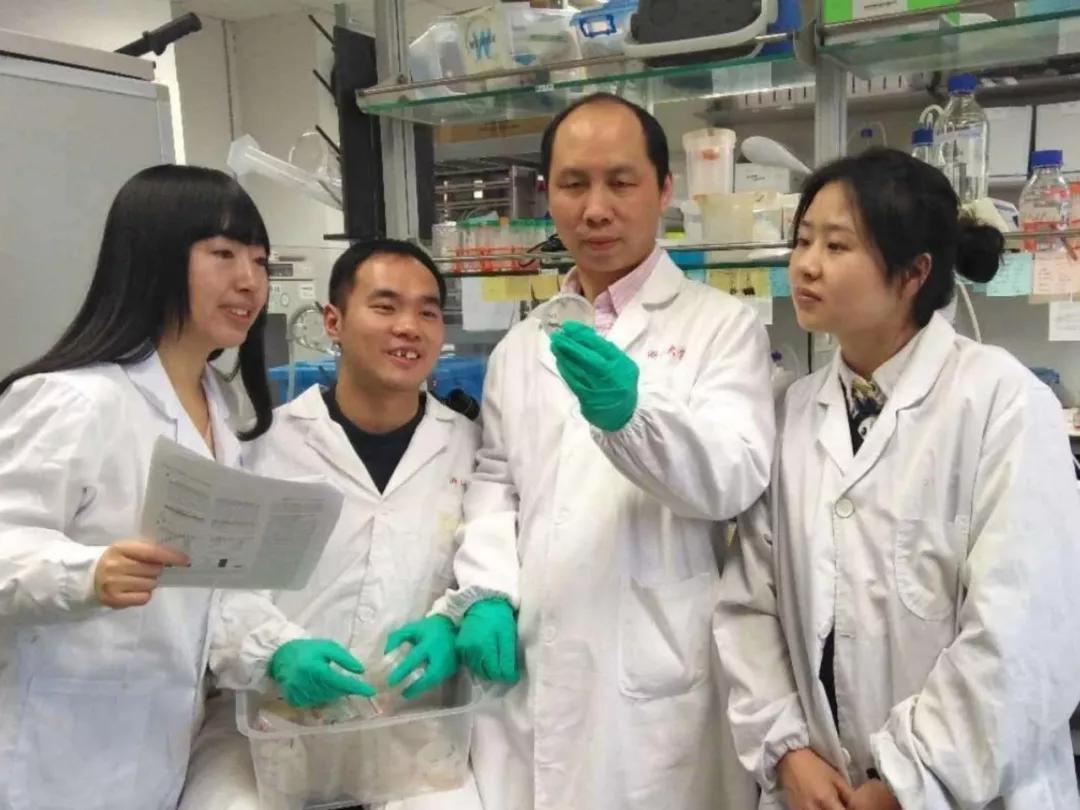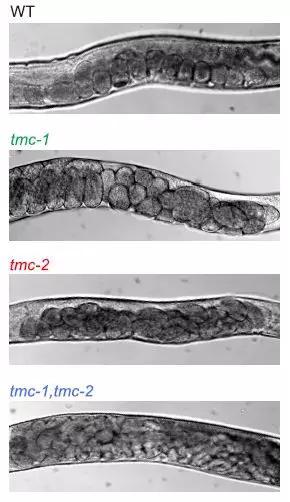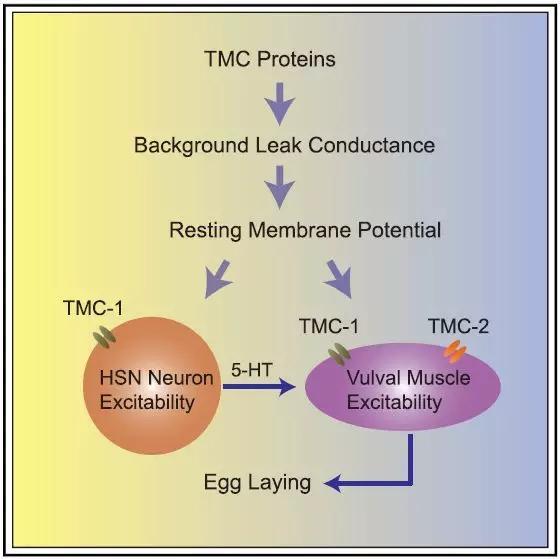Release date: 2018-01-29
Deafness is the most common type of sensory impairment, with 50% being caused by genetic factors. In China, 2-3 out of every 1,000 newborns have hereditary congenital deafness. A number of genes related to congenital deafness have been found. One of the common ones is the TMC1 gene expressed in inner ear hair cells. It also has a "good sister", TMC2, which also lives in inner ear hair cells.
Both TMC1 and TMC2 belong to the transmembrane channel-like proteins (TMC) family. Although the effects of their mutations are known, their specific functions have not been clarified. The regulation mechanism of auditory function and the resolution of hearing and vestibular disorders are very important.
This time, Dr. Kang Lijun, a researcher at the Institute of Neuroscience at Zhejiang University, and Dr. Xiao Rui from the Institute of Aging at the University of Florida, found that the role of TMC1 and TMC2 proteins is to mediate background and Na+ currents to maintain nerves and muscle cells. Resting membrane potential and excitability. Moreover, the use of the tricyclic antidepressant imiprimine to inhibit or knock out the background K+ ion channel can restore the behavioral defects of the mutant gene.
The study will be published on January 26th in the "Phase" magazine "Neuron", doctoral students Yue Xiaomin, Zhao Jian, and master student Li Xiao as the co-first author of the paper [1].

Co-first author Yue Xiaomin (first from left), Zhao Jian (second from left), Li Xiao (fourth from left) and co-communication author, Kang Lijun researcher (third from left), pictures provided by researchers
Each of us is made up of cells, and normal life activities are also achieved by cells. Every living cell has a certain excitement, as long as it is alive, it is "å—¨"! As for the energetic "smashing up", it is still a lingering "doing a trick", which is measured by the resting membrane potential.
There are different ions in the inner and outer sides of the cell membrane. At rest, the K+ concentration in the membrane is higher than the membrane, the Na+ concentration is lower than the membrane, K+ will carry the cation outflow, and Na+ will carry the cation inflow. Thereby dynamically affecting the membrane potential and ion balance of the cells. Therefore, we can see that K+ current and Na+ current play an important role in the regulation of cell membrane resting potential, and whether they can smoothly shuttle between intracellular and extracellular, it depends on the ion channel composed of protein on the cell membrane. It is.
As we said before, TMC1 and TMC2 belong to the ion channel-like protein family, so is their function related to K+ or Na+ current? Through experiments in the nematode, the researchers first discovered that TMC1 and TMC2 can promote nematode spawning, and their mutations can cause nematode spawning defects, and a large number of eggs can not be discharged until the mother's stomach is broken.

From top to bottom, the number of eggs in the wild type nematode, TMC1 mutant nematode, TMC2 mutant nematode and TMC1 and TMC2 mutant nematodes, and the double mutant nematode eggs were blurred.
In the process of exploring the underlying mechanisms, the researchers found that TMC1 and TMC2 are expressed on HSN neurons and vulvar muscle cells of nematodes. They promote the spawning of nematodes by regulating the cell membrane excitability of both cells. Further experiments confirmed TMC. Proteins achieve this ability by mediating Na+ currents.
After talking for a long time, what does this have to do with deafness? In fact, in the study, the researchers expressed normal and murine normal TMC proteins in the TMC mutant nematode, and found that the dystocia was rescued, while a series of physiological indicators of neurons and muscle cells were restored. normal.
This indicates that the TMC protein is highly evolutionarily conserved in its mechanism of action, and the conclusion in the nematode can be pushed into the human body. That is to say, the nematode spawning disorder caused by the mutation of TMC gene is because the excitability of neurons and muscle cells is not enough, so weak that it is so "live", and whether the deafness caused by the mutation of TMC gene is also caused by the excitability of inner ear hair cells. Not enough sex, not enough to achieve "willing to hear"?

In the study, the researchers also had a gratifying harvest. The inhibition of the tricyclic antidepressant imiprimine or the knockout of K+ ion channels on muscle cells can alleviate the defect of TMC mutation. Therefore, TMC gene-related genetic defects may be treated by chemical drug regulation or gene editing techniques.
Prior to this, the researchers only found the only background Na+ channel protein, the NALCN protein family, and this study proposed the existence of a second background Na+ channel family, and at the same time laid the treatment and drug development of hereditary deafness. basis.
Source: Singularity Network
It can prevent some medicine or blood from splashing on the face, thus protecting the eyes. This kind of glasses is generally used in conjunction with masks and surgical caps to fully protect the doctor's head.
[Functions of medical eye masks]
1. Prevent blood, potion and other liquids that cause damage to the skin from causing unpredictable damage to the eyes.
2. It can prevent the impact of objects on the eyes during close surgery.
3. The inner space of the eye mask is large enough for doctors who wear myopia glasses.
4. The breathability must be good, generally there are vents




Protective goggles,disposable medical equipment,personal protection,daily protection
Shanghai Rocatti Biotechnology Co.,Ltd , https://www.ljdmedical.com